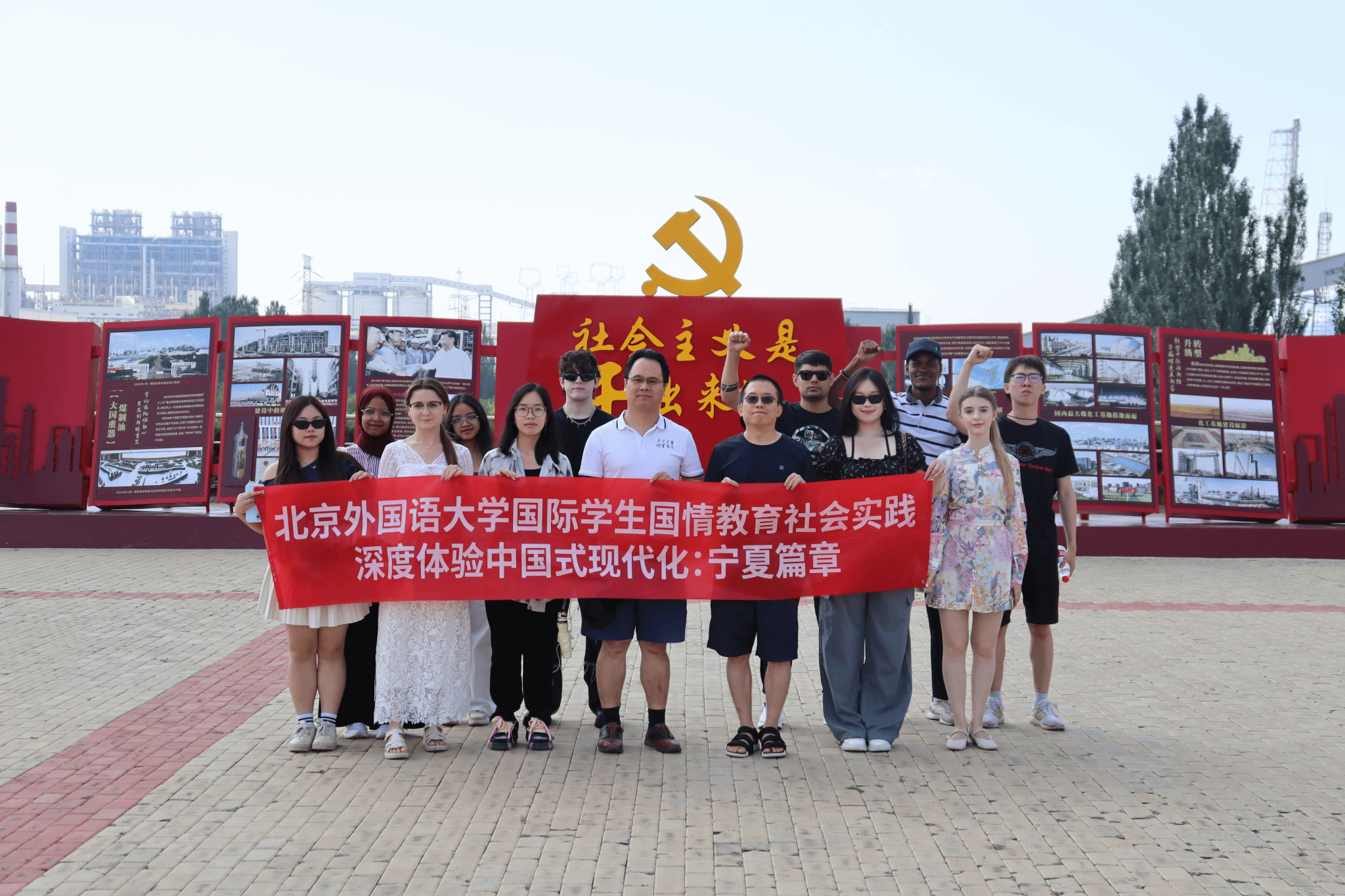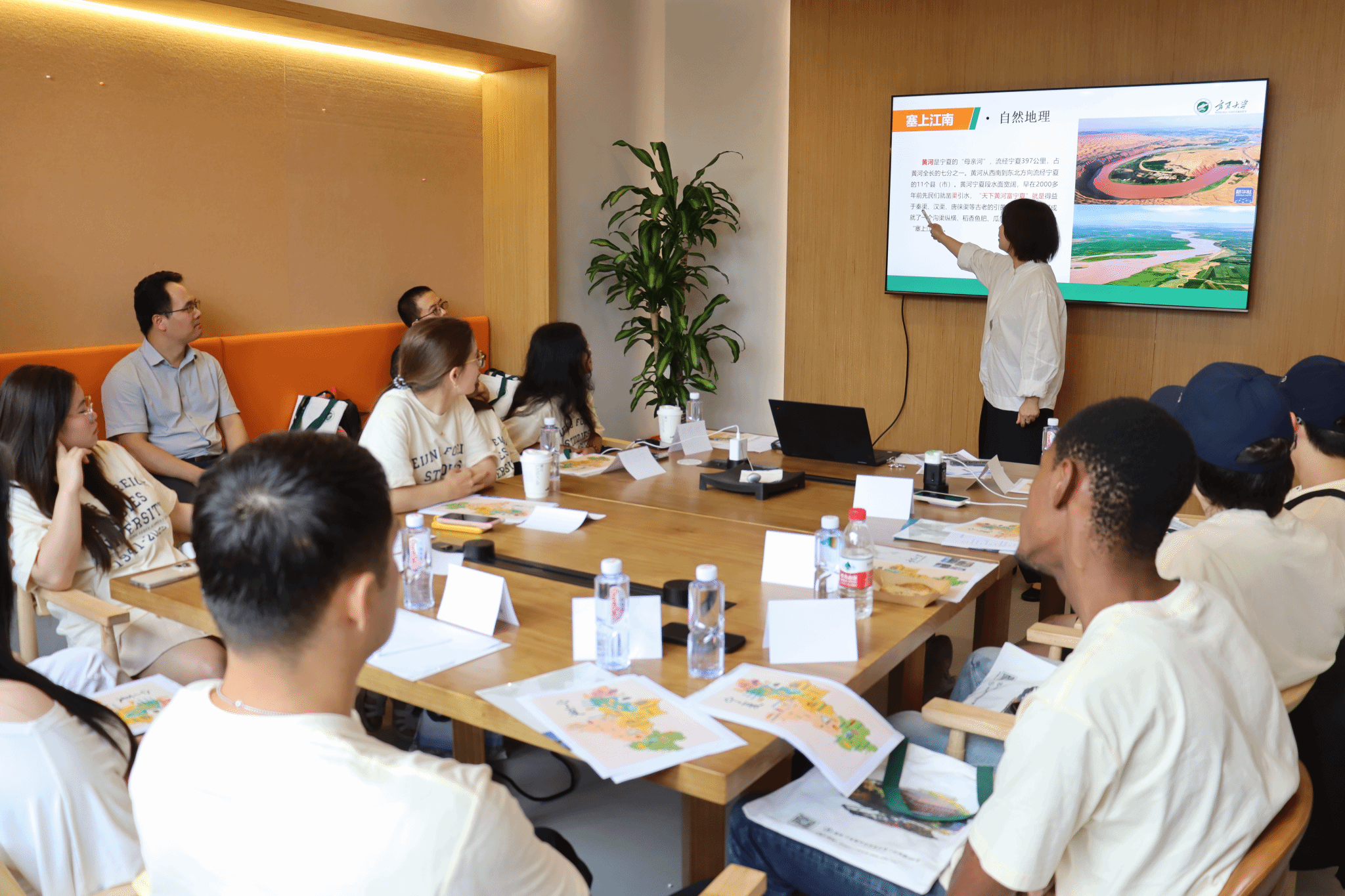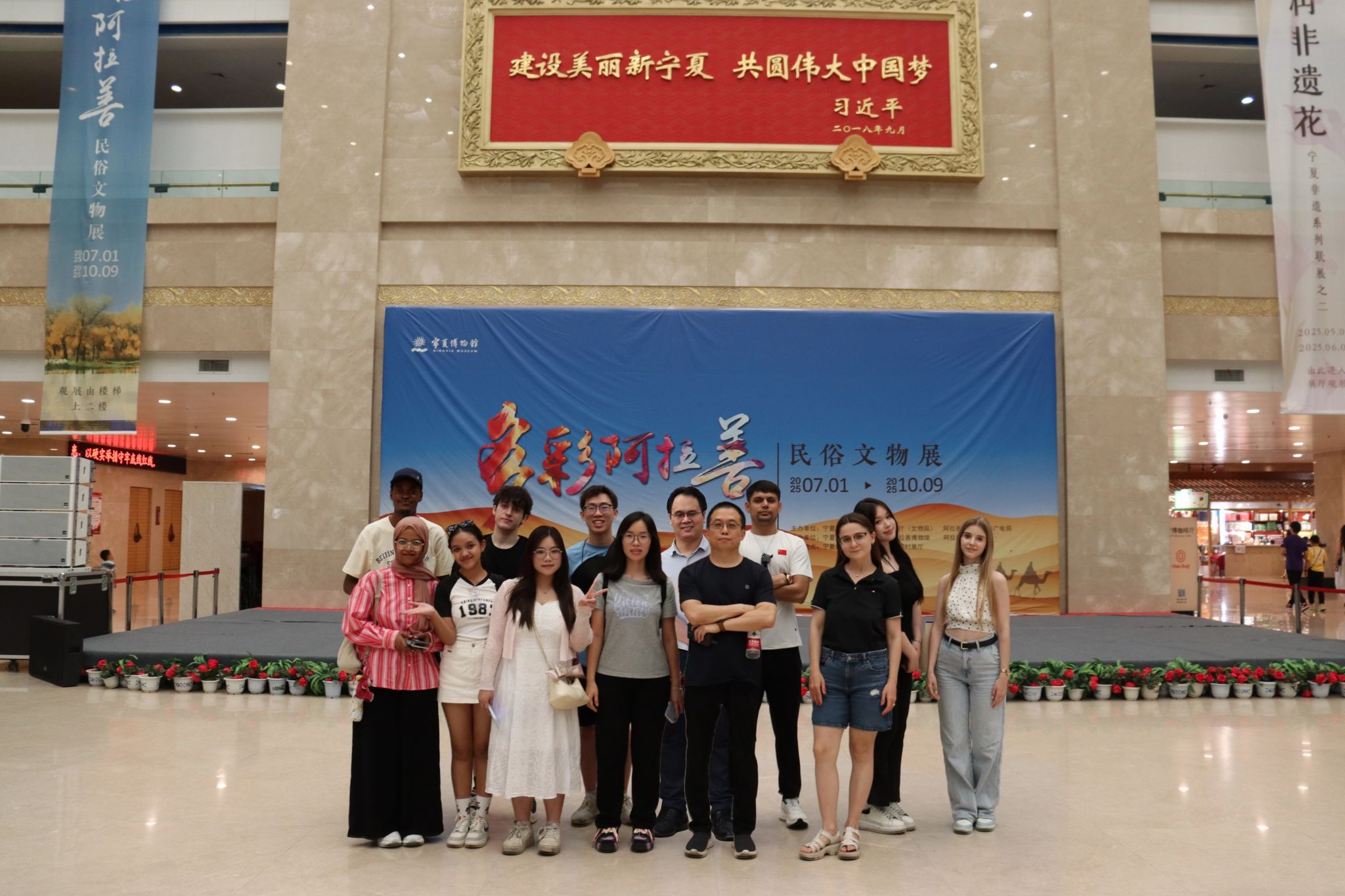From July 3 to 9, a summer social practice program titled “Deep Dive into Chinese Modernization: Ningxia Chapter”, organized by BFSU’s Overseas Students Affairs Office, was carried out in Ningxia Hui Autonomous Region, bringing together international students from 11 countries, including Russia, Italy, Austria, and Vietnam, to learn about China’s national development.

As a model of east-west collaboration in poverty alleviation, the development of Minning Town was a key focus of the study tour. On July 4, the team visited the town’s history museum to gain a comprehensive understanding of the region’s transformation from a “dry sandy land” to a “golden land of opportunity.” They also studied General Secretary Xi Jinping’s important remarks on poverty alleviation and rural revitalization, gaining firsthand insights into how the people-centered development philosophy is implemented at the grassroots level.

In the field of ecological development, the students and faculty visited the Helan County Science Education Center for Urban and Rural Domestic Waste and Ningxia Erquan Environmental Technology Co., Ltd. to learn about the latest advancements made by environmental protection enterprises in areas such as AI-powered solutions and international market expansion. At Shapotou in Zhongwei City, they listened to experts elaborate on the straw checkerboard technique for desertification control and took part in hands-on activities. Additionally, visits to the Shahu Wetland Conservation Area and the Yuquanying Vineyard Base offered insights into modern agricultural practices, showcasing the region’s active efforts to balance ecological preservation with economic development in northwest China.

In terms of modern industrial development, visits to coal-to-liquids and coal-to-gas projects at the Ningdong Energy Chemical Industry Base gave students a direct view of the current state of clean energy development. General Secretary Xi Jinping’s important statement made there — “Socialism is achieved through hard work” — resonated deeply with the students. At Ningdong GreenTech New Energy Company, they learned how photovoltaic energy contributes to green and low-carbon development. Meanwhile, at the Xiaxizan Eco-Goji Berry Farm in Zhongning County, students participated in berry picking and toured the processing workshops, gaining insight into how science and technology are driving industrial upgrades and increasing farmers’ incomes through the development of specialty agriculture.
As part of the cultural exploration, the students and faculty visited the Ningxia Museum, the Western Xia Museum, and the Shuidonggou Ruins to trace the history of the Silk Road and the Western Xia Dynasty, building a deeper perspective on the pluralistic unity of the Chinese nation. In Huangyang Guluo, an ancient village in Zhongning County, they observed and experienced two national-level intangible cultural heritage items, the Huangyang Coin Whip Dance performance and the making of haozi noodles, witnessing how cultural revitalization contributes to rural development. Activities such as the history class at Ningxia University, learning to sing the folk song Ningxia Chuan, and exploring the architectural integration of Confucian, Buddhist, and Taoist elements at Gaomiao Temple further deepened the students’ appreciation for the diversity and inclusiveness of Chinese civilization.
At locations such as the Zhongwei City Cloud Data Center, the Putian Ruinong Selenium-Enriched Watermelon Seedling Base, and the Smart Ranch operated by China Energy Engineering Group Co., Ltd., students explored how digital technologies are applied in modern agriculture, urban management, and industrial development. These visits highlighted the vital role of technology in driving the process of modernization across various sectors.

The event offered international students a firsthand experience of China’s achievements in poverty alleviation, ecological protection, and industrial development, deepening their understanding of Chinese modernization.